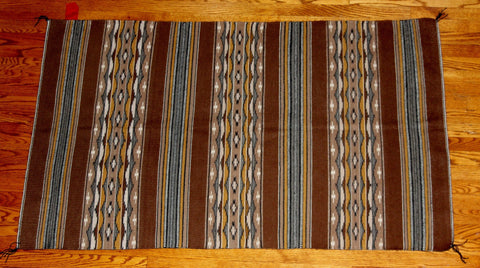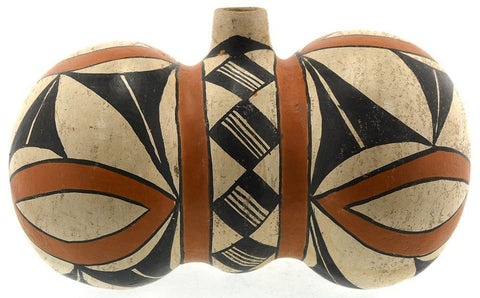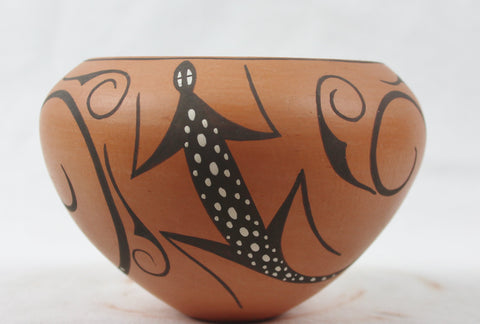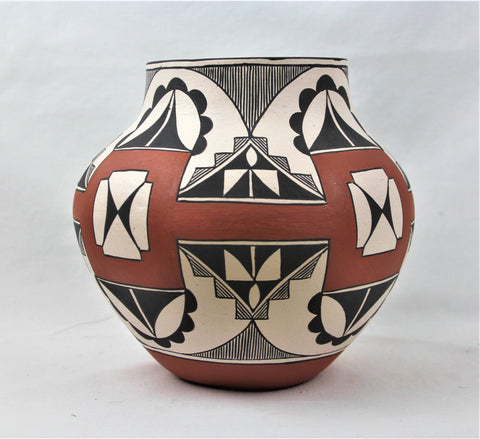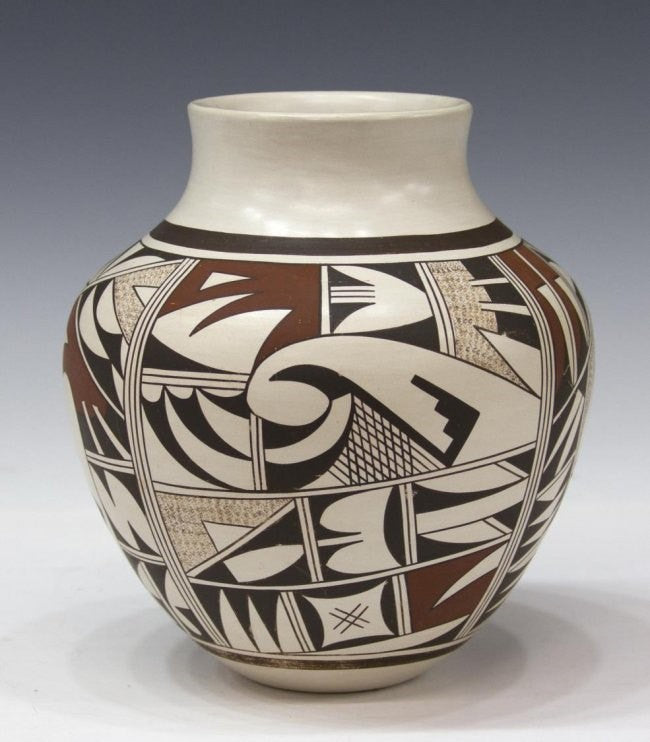
Native American Hopi Pottery Bowl, by J. Navasie #232-Sold
$ 3,562.50
Native American
Hopi Pottery Bowl, by J. Navasie
232. Description: Native American Hopi-Tewa pottery bowl, by Joy Navasie (second frog woman, 1919 - 2012), geometric and scrolling ornamentation on a white ground, frog hallmark underfoot, 7.5"h, 6.75"w, 2.75 lbs
Joy Navasie (second Frog Woman - Yellow Flower) was among the most famous of Hopi-Tewa potters. She learned the skill from her famous mother, Paqua Naha, the first Frog Woman. Joy was born in 1919 and recalls that she started making pottery when she was about 17 years old. Paqua Naha, just a few years before she passed away, developed the white ware pottery style in the mid-1950s.
Joy Navasie picked up the tradition and continued it until her retirement in 1995. Now, her daughters (Marianne Navasie, Leona Navasie, Natelle Lee, Loretta Navasie Koshiway and Grace Lomahquahu) have continued the tradition. Joy Navasie signed her pottery with a frog hallmark, as did her mother. There is a difference in the way they each drew the feet of the frog. Paqua Naha used short straight toes and Joy Navasie used webbed toes.
Joy Navasie (Frog Woman) passed away in October 2012. Reportedly she had been in poor health for several years and was in an assisted living facility. (Source: Adobegallery)
A History of Pueblo Pottery:
Pueblo pottery is made using a coiled technique that came into northern Arizona and New Mexico from the south, some 1500 years ago. In the four-corners region of the US, nineteen pueblos and villages have historically produced pottery. Although each of these pueblos use similar traditional methods of coiling, shaping, finishing and firing, the pottery from each is distinctive. Various clay's gathered from each pueblo's local sources produce pottery colors that range from buff to earthy yellows, oranges, and reds, as well as black. Fired pots are sometimes left plain and other times decorated most frequently with paint and occasionally with applique. Painted designs vary from pueblo to pueblo, yet share an ancient iconography based on abstract representations of clouds, rain, feathers, birds, plants, animals and other natural world features.
Tempering materials and paints, also from natural sources, contribute further to the distinctiveness of each pueblo's pottery. Some paints are derived from plants, others from minerals. Before firing, potters in some pueblos apply a light colored slip to their pottery, which creates a bright background for painted designs or simply a lighter color plain ware vessel. Designs are painted on before firing, traditionally with a brush fashioned from yucca fiber.
Different combinations of paint color, clay color, and slips are characteristic of different pueblos. Among them are black on cream, black on buff, black on red, dark brown and dark red on white (as found in Zuni pottery), matte red on red, and poly chrome a number of natural colors on one vessel (most typically associated with Hopi). Pueblo potters also produce un-decorated polished black ware, black on black ware, and carved red and carved black wares.
Making pueblo pottery is a time-consuming effort that includes gathering and preparing the clay, building and shaping the coiled pot, gathering plants to make the colored dyes, constructing yucca brushes, and, often, making a clay slip. While some Pueblo artists fire in kilns, most still fire in the traditional way in an outside fire pit, covering their vessels with large potsherds and dried sheep dung. Pottery is left to bake for many hours, producing a high-fired result.
Today, Pueblo potters continue to honor this centuries-old tradition of hand-coiled pottery production, yet value the need for contemporary artistic expression as well. They continue to improve their style, methods and designs, often combining traditional and contemporary techniques to create striking new works of art. (Source: Museum of Northern Arizona)
----------------
View the other items in my shop: http://www.etsy.com/shop/CulturalPatina?ref=shopsection_shophome_leftnav

